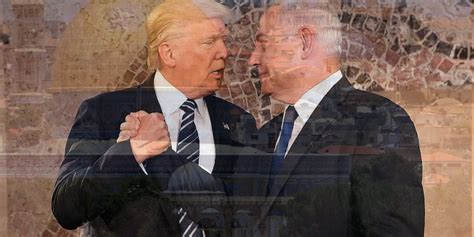
Imagine the outrage western governments would express if terrorists were to kill more than 50 Israelis on the streets of Tel Aviv in a single day. Yet when it comes to the killing that Israeli forces carried out on Monday at the gates of Gaza – and have been doing for the past several weeks – the silence from most western ministers is deafening. Worse still, there are attempts to justify the deaths as legitimate self-defence.
The Israeli government argues that the crowds of mostly young Palestinians at the Gaza fence offer a lethal threat to peaceful Israelis. The claim is as ludicrous as it is cynical. Even if one or two protesters broke through the fence they would have nowhere to go except into the arms of the Israeli security forces, who could easily detain them.
The Palestinian interlopers have no allies on the Israeli side of the fence, nor any transport to take them to populated parts of Israel. Nor are they armed. It is clear from video footage that they have no suicide belts round their waists, or guns in their hands. Occasional stones were the only weapons.
Normal police methods of arrest and trial would be perfectly adequate to handle the issue. Yet instead, Israeli snipers used live ammunition against demonstrators, wounding thousands in the legs but also killing dozens.
In spite of the outrage from international human rights groups on Monday, matched by a few courageous Israeli groups also, there was no sign on Tuesday that Israeli commanders had given their troops any new rules of engagement. With tensions raised as the funerals of victims got underway, the risk of new deaths remained high.
A chief cause of the protests is the misery and despair created by 11 years of blockade that the people of Gaza have had to suffer – because they had the temerity to vote in a Hamas government in 2006.
Egypt shares some of the blame for the collective punishment inflicted on Gazans. So too does the Palestinian authority, which held back the payment of civil servants’ salaries in Gaza. But the lion’s share of the blame rests with Israel, which initiated and orchestrated the embargo and has repeatedly refused to end or even relax it significantly.
Offers by Hamas to declare a ceasefire or truce with Israel in return for an end to the embargo have been spurned. The result is the hopelessness that encourages young Palestinians to risk their lives at the border fence.
Hamas certainly encourages the protests, seeking to highlight Israeli intransigence and cruelty; but to dismiss the young demonstrators as though they were robots being manipulated to act as “Hamas’s human shields” – as official Israeli spokespeople do – is to minimise the genuine frustration and agony that many Gazans feel.

The second deep cause for the protests is history. Palestinians see themselves as a sending a reminder to the world that Israel’s foundation 70 years ago involved the deliberate ethnic cleansing of hundreds of thousands of Palestinians. Their demands for compensation or restitution have been routinely ignored for decades. Palestinians are struggling to keep the unresolved issue from fading from view.
Yet where the Israelis take aim with ruthless efficiency, Donald Trump shoots from the hip. This week’s carnage in Gaza is not directly linked to the US president’s provocative decision to transfer the US embassy to Jerusalem and recognise the city as Israel’s capital.
But this move has added to the anger and frustration. Under previous US administrations, official policy on all aspects of the Israeli-Palestinian dispute has always been skewed overwhelmingly towards the Israeli government. Few Palestinians have been naive enough to see Washington as an honest broker.
But most US presidents have at least tried to restrain the violence and seek political compromises, however much the terms gave Israel the better part of the bargain. This remains true for any of the variants of the much-vaunted two-state solution that have been put on the table.
Trump is different from his predecessors. He makes no effort to understand the Palestinians’ current proposals for peace, let alone the history of the conflict. Choosing to move the US embassy to Jerusalem on the very day Israelis marked their state’s anniversary while Palestinians mourned their Nakba (“catastrophe”) showed insensitivity at best.
At worst it was a deliberate provocation, denying to the Palestinians all pretence of US even-handedness. But then, of course, Trump has form. He has shown that blend of ignorance and arrogance which is the hallmark of many would-be aspirants to the highest office in the United States, and which some who get elected never overcome.
On the nuclear deal with Iran, he took action without considering the consequences. He did not listen to those allies who had negotiated for years with the Iranians. He also chose to ignore the findings of the International Atomic Energy Agency that Iran was not violating any of the nuclear deal’s terms. Trump failed to explain why tearing it up was better than having a less-than-perfect deal.
No two issues in the Middle East are more tense than Israel’s dispute with the Palestinians and the west’s dispute with Iran. They require careful analysis of each side’s legitimate aspirations as well as grievances, and mature discussion and compromise to find solutions. Trump will have none of this.
He failed to consult the scores of experts from his own country or from the Middle East who had warned him that jumping to endorse the current Israeli government’s ambitions for Jerusalem – also held by its settler constituency – would destroy any chance of successful negotiations in the future. Instead, Trump thinks he can simply tell the Palestinians “you’re fired” and they will meekly go away.
Jonathan Steele is a former chief correspondent for the Guardian
This article was originally published by “Guardian”
The 21st Century
